Clematis - royal garden flower, gentle and sophisticated, with beautiful large flowers of various colors. The plant is climbing and for the season can be completely precluded for the fence or close the unsightly wall, an old fence. There are about 250 types of curly plants, but Clematis Andromeda is highlighted among them.
Clematis Andromeda: Description
The curly plants of this species are distinguished by abundant bloom, and with proper care, proper watering, making feeding and observance of the rules of trimming, in growth reaches about 4 meters. Based on this feature, when landing, the main rule is to prepare a permanent place for the habitat of Clematis. In one place, curly plants can delight beautiful bloom for several years in a row.
Clematis Andromeda enters the Patence group, these plants are distinguished by high growth, large flowers of bright colors.
Clematis of this species has a large and very beautiful color of flowers, a bright pink strip in the center of the petal. The flower center decorates the crown of golden large stamens. In the Garden of Liana perfectly feels in the pronented terrain and will delight long flowering. Flowers are very large, in diameter can reach about 16 cm. On young shoots with the onset of heat, single flowers are formed, and on the plants overwhelmed by plants - numerous and large.
The flowering period: the middle or end of May (it all depends on the latitude, in which Liana is grown) and up to the end of June.
Andromeda Clematis prefer halftime and not very love to open, well-lit terrain. This is due to the fact that on bright sunny color, the flowers quickly fade. And if the plant ensure proper care, then you can extend the flowering period.
During flowering, Liana climbs up, and large flowers are descended by a cascade, forming almost a solid bedspread from beautiful, unusual colors.
Features of growing Lian:
- the plant loves half, does not endure direct sunlight, quickly faded;
- he loves a good trimming immediately after the first flowering, then will delight large flowers;
- with proper trimming (it is necessary to remove a part of the old escape with the nozzles), then you can count on abundant flowering a second time, which does not boast every type of this clichast plant;
- loves abundant watering, but with a good drainage system, so that the roots do not start;
- making feeding with the observance of deadlines gives abundant bloom;
- landing zones for this species from 4 to 9;
- loves light fluttered by humus or superphosphates, soil;
- does not like drafts, so careful preparation for planting and choosing a place.
Clematis Andromeda. Photo
Clematis Andromeda: landing
Some gardeners argue that the Clematis are not additive, others - that this flower requires a lot of attention. But the requirements are fulfilled, therefore, if you carefully treat all the peculiarities in the cultivation, it is possible to obtain as a gratitude - beautiful abundant bloom.
What you need to Clematis:
- Much light, but that the straight sun rays do not burn a gentle plant. Therefore, for landing you need to choose a lit place to be present halftime.
- Clematis do not like drafts and strong winds, so when choosing a landing room, it also needs to be considered.
- Preparing the pitches for landing, do not forget that this is a wing plant, which will be needed. But too close to the wall, fence or other support plants are not planted. The optimal distance is at least 50 cm, and if the metal fence is even more, because the metal in the summer under direct sunlight is very heated and the curly flowering plants such a neighborhood will not benefit.
- The convergence of Clematis does not endure, so if water will be drained from the roof of the house, from this gentle plants may die. In addition - in the cold season for Lian, the mooring of the soil can be destructive.
When landing, it is necessary to comply with such rules:
- Pit preparation - the sizes of the pits should be 50 per 50 cm (for light soils), for severe - the size of the landing pits 70 by 70 cm, with the same depth. It is allowed to deepen by another 20 cm in order to create a good drainage. Lian has a long root system, so pits can be narrow, but deep.
- The drainage uses fine gravel, small pebbles or clay.
- At the bottom of the pit you need to lay a layer of drainage, no more than 5-7 cm thick, put a layer of fertile soil on top and make a deepening in the yam to insert a seedling.
- Rejection when landing - no more than 12 cm, with the reeling of the root neck. When landing, the roots must be straightened to straighten.
- In order for the trunk, it was not overwhelmed with watering or precipitation, it is necessary to put a layer of shallow bark around the trunk.
- After planting it is necessary to pour the soil.
- If the seedling is strong and started in growth, thin branches require garters immediately after landing.
- If the soil is poor, you can enrich it with soil, mixed with humus (half). But, in no case cannot be made fresh manure, because plants can die immediately.
- To prevent overheating of plants, the soil around the seedling needs to be mulched, a layer from 5 to 15 cm (this requirement must be observed if the lianas are grown in the southern regions).
If the soil is very poor, even before landing, in the preparation of the soil, it is desirable to enrich it with fertilizers, suitable for cultivation of Clematis complex fertilizers. It is necessary to do this: in the pit for landing you need to make humus (up to 15 kg), peat or coarse sand (up to 8 kg), chalk (no more glasses) or wood ash in the same quantity, plus superphosphates, half of the glass. Before planting the soil, it can be frowning and irrigated if the water is added to the water (1 part of the reworked manure is taken into the water (on 5 parts of water).
What else should be taken into account when landing Clematis: other perennial plants can not be attached, because they will take part of moisture and nutrients. The maximum allowable distance is 1.5-2 meters. Wetlands and soils with close to running groundwater, do not like Clematis, so you need to choose such sections that will quickly push the onset of spring.
Crossing Clematis Andromeda
The main rule in the breeding of curly plants - Clematis, is a timely trimming. To preserve the decorative effect, extend the flowering period and get abundant bloom, it is necessary to regularly trim the lianas.
Grade Clematis Andromeda refers to the first and second type of trimming intensity:
- These plants are capable of forming flowers on old shoots left since last year. Pruning will not be a lot of work, because it is necessary to remove at the end of the season (after flowering), all weak shoots and trim the generative part.
- Weak trimming can be done immediately after the first flowering will be held. Then you need to cut off the part of the old escape on which the nozzle remains. As a result, the correct trimming can be expected by second flowering. By abundance, it should be the same as the first.
- Pruning for the winter should be performed necessarily, because the plants although frost resistant (this variety is especially), but with severe frosts it is not able to protect itself. Therefore, in order not to destroy Lian, it is necessary to cut a bush, leaving 50 cm from the ground.
Important: only plants that have reached the age of 1 year are cut off.
Andromeda Clematis breeding methods
For this type of Lian, such methods of breeding are available:
- bust division (most common);
- reproduction with decodes (autumn and summer) - also one of the most sought-after methods in flower growing;
- pinching of shoots;
- seeds.
The most troublesome method of breeding clematis is seeds. Used extremely rarely and only in case of acute necessity. For example, when carrying out breeding works.
Seed method of breeding Clematis Andromeda
- For reproduction in this way, the planting material is carefully selected, which was stored in compliance with all the rules for at least 4 years.
- For landing, only the largest seeds are needed, which are evyed in the autumn period in the ground.
- The medium-sized seeds are sized in winter, and small seeds can be sowed in the middle of spring or at the end of March.
- When cultivating clematis of seeds, a lot of attention is paid to the observance of humidity (without drying and overcoating), as well as the temperature regime. The minimum mark on the thermometer should be no lower than +18 degrees.
- Sowing should be under the protective film, and when they get fixed - seedlings can be divened (after the appearance of 2 leaves).
- In the spring, when night frosts will be afraid, seedlings can be transplanted in the garden in the open ground. Choose the pronted sections with light soils. Landing diagram for seedlings: 15 by 20 cm. Landing pit, fertilizer with superphosphates or watering with aqueous manure (3 parts of water 1 part of the manure).
- To form the correct root system, young shoots need to be quenched over the season several times.
- For the winter, young Clematis needs to be hidden or dry garden leaves, and with severe frosts, provide additional protection.
The method of reproduction of Clematis Andromeda by dividing the bush
Effective and relatively light. Suitable for the reproduction of Clematis of this variety.
- For successful reproduction, you need to choose a strong healthy bush, with a good root system. The age of the bush is 3-6 years old, but that the root system is not very scorched.
- Clematis must be squeezed, very carefully remove along with a lump of land, the roots are free from unnecessary land, divide into several parts so that on each separated part there were 1-2 kidneys on the root cake.
- After the manipulation done, the plants need to immediately put on the permanent place of cultivation. Therefore, before proceeding with the division of the bush, you need to prepare landing pits, make a good drainage and fertilize the soil.
- Despite the fact that the plant is stressful, Clematis are quickly leaving in a new place and after a while they will delight abundantly blossom.
The reproduction of Andromeda Clematis
- One of the light methods in which Clematis is cleaned before wintering from dry parts, remove dry flowers and make pruning to the first kidney.
- Then the cropped parts of the plant with developed kidney are twisted, fold into the ditch with peat, seal with fertile soil, are covered with a snack or moss, left in such a state for the winter.
- With the onset of spring, this place is watered several times abundantly, and when the first shoots appear, mulched by humus (rewind or peat).
- With the onset of autumn, strong shoots can be digging carefully, forks, for the purpose of transplanting to the permanent place of cultivation.
Andromeda Clematis reproduction - pinching
This method is very similar to the reproduction of gods, the diagram is the same, only young shoots are not left in the soil until the next spring, taking brackets, and block the tanks with the ground and the peat is shuffling so that they are lower than the surface layer of the Earth, the nodules are fixed in the pyline and Leave until next spring.
As needed when the sprout goes into growth, the base will need to add soil. Then the pots dig up with young shoots, carefully separating them from the parent plant.
Clematis Andromeda: landing and care
Behind the plants it is easy to care, Clematis are not capricious and perfectly adapt to the conditions, but this does not mean that everyone needs to put on a samone. If competently care for plants, they will delight beautiful and long blossom, and then this grade of Andromeda Clematis is considered one of the most beautiful.
Care features:
- plants love the soil moderately wet, enriched with humus, squealed or loamy;
- lighting: moderate, with shading;
- the irrigation of the leaves into severe heat is allowed, but only after sunset;
- it is impossible to dry up the upper layer of the Earth, so to prevent such, it is necessary to loosen the soil in a timely manner, mulch peat, humus or sawdust. It is also allowed to shadow the lower part of the trunk if Clematis is grown on the south side. You can sow lower herbal cultures: velvets, calendula, phlox and lavender;
- if the summer was rainy, the root zone is desirable to mulch. For example, around the root decompose chopped wood ashes;
- watering is moderate, Clematis do not like the convergence. It is enough once a week, and if the weather is rainy, 1 time in 2 weeks. Saplings "drink" to 20 l for one watering, and grained plants - 30 l;
- autumnal care: removal of dry and damaged parts, garter, you can put plants on the ground and cover with a layer of dry foliage or provide a frame (cover tool and put the box from above). Or you can not remove the plants from the support and wind by observing material. Open in spring as soon as night frosts and weather will resolve;
- the support is required for curly plants, you can build a support yourself or purchase special. When choosing a material, preference is preferred by strong structures, because as the plant is growing, it becomes harder. The diameter of the support is 1.5 cm maximum;
- making feeding: Mulching The first 3 years after the landing by the Organic, after the first year of cultivation, you can pour a bush with limescale (Dolomitic flour 200 g and 10 liters of water). Dilute the lime powder or dolomite flour is needed in warm water. For an adult bush enough of one bucket;
- in the spring, making feeding with a prophylactic goal of pests and diseases - urea solution. Preparing like this: 10 liters of water takes 1 sec.
- during the warm time, in the summer, in the late spring and early autumn, feeding can be made 1 time in 2 weeks with alternation: an organic (korovyat, proportions 1 part of a cowboy and 10 parts of water) and mineral fertilizers (Kemira Universal);
- at the beginning of the summer, it is desirable to feed before the flow of flowering with nitric fertilizer (10 to 85 g of ammonia nitrate takes 10 liters of water). Consumption Standard: 1 bucket for each bush if the bush is small - on the floor of the bucket;
- after the flowering is completed, feeding plants with phosphoric fertilizer or potassium. In the fall, wood ash is made, on 1 plant not more than 0.5 liters;
- during the flowering period, fertilizers do not contribute.
Clematis pests and diseases Andromeda
Clematis of this variety is a very rack for viral diseases, but are not protected from damage to fungi. In order to avoid infection, the plants are treated with a "polycardocin" suspension during the growing season. At an early stage, you can get rid of the fungus by treating the roots with a 2% azocela solution or treatment with Triphodermine powder, "Fundazol". If the plant is hit by 50%, it is necessary to complete deletion.
These methods of processing are also helping in the fight against rust and pulse dew (the "cateran" is also effective). But to get rid of spottyness, it is necessary to spray Clematis with a solution of iron / copper sipop 1%.
Prevention: regular inspection, removal of insects affected (WLL, web tick, caterpillars), parts and leaves.
Clematis Andromeda: Reviews
Inna Alexandrovna: " Clematis launched a long time ago, the "Andromeda" grade loved. Very beautiful flowers, bright and large. The plant requires care and that's what I would recommend novice flowers: If you want not to destroy the plant, you do not need to trim the top of the young Clematis, it is enough to pinch the tops of the shoots. And for the development of the root system pruning young shoots can be done only in the two-year seedlings».
Maria Nikolaevna " Clematis - this is my love, I have several types, but most of all like "Andromeda" for their magnificent blooms. Clematis breed for several years, and through trial and error, came to the conclusion that this variety needs a strong support and in any case - the metal fence is not purged because it is heated at noon and vines choke with such heat, no ventilation by. In the first year I ruined several species, then it began to plant vines at a distance of 1.5-2 meters from the fence, follow the fertilizing and watering. The variety is worthy of praise!»

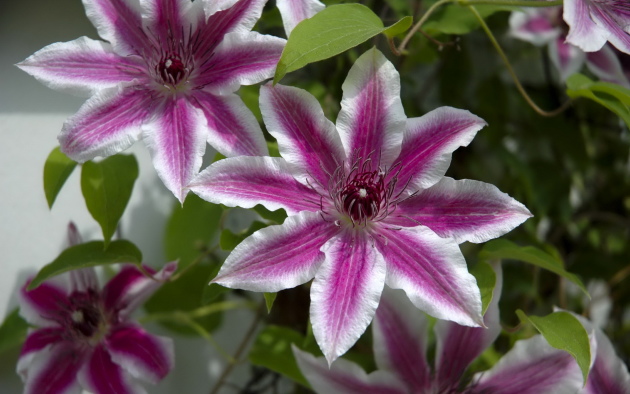
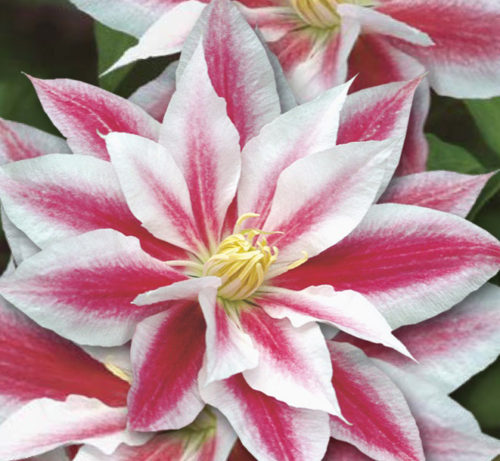
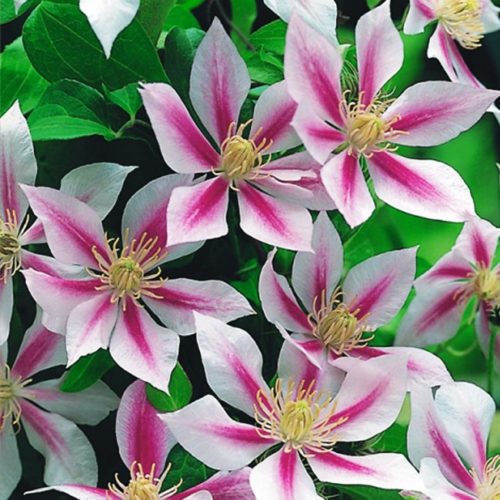
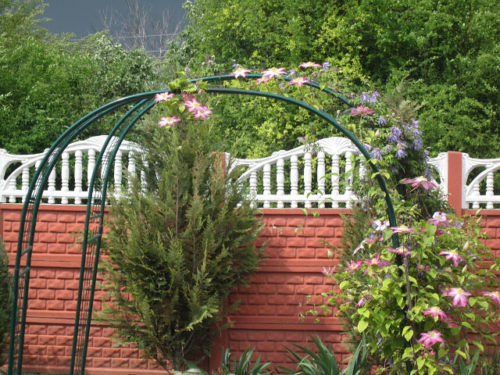
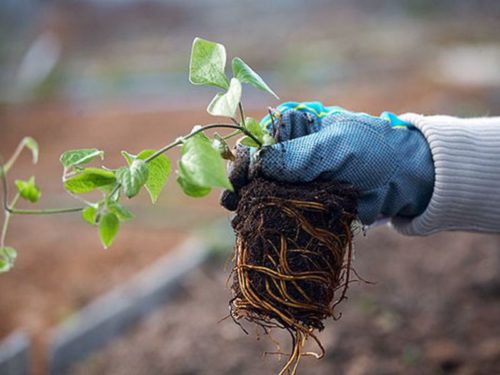
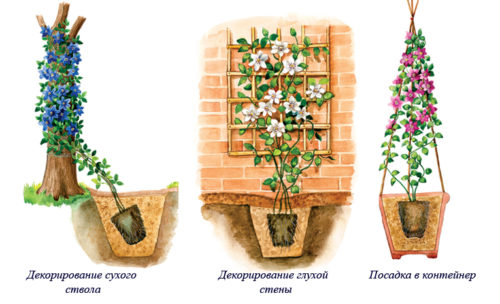

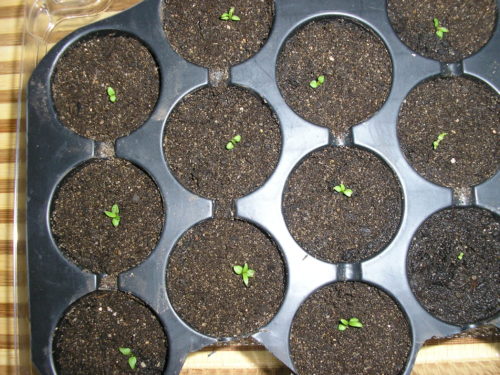
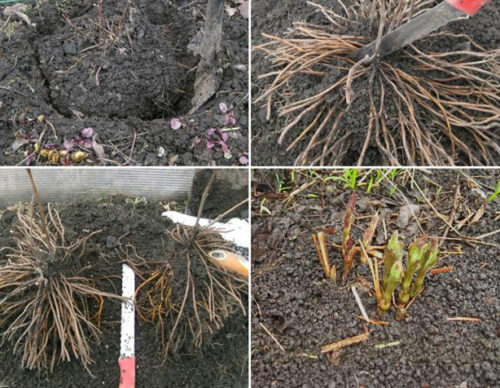
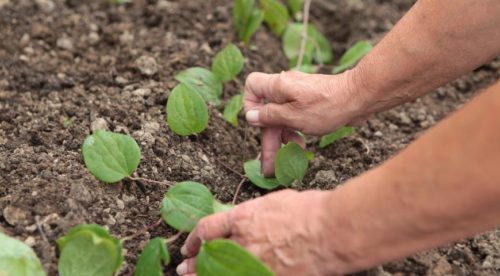
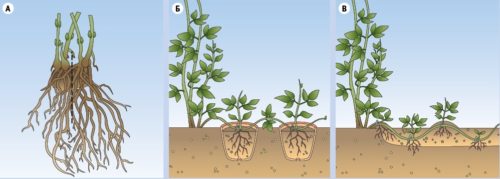
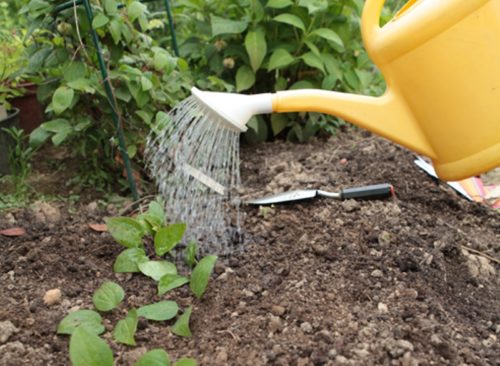
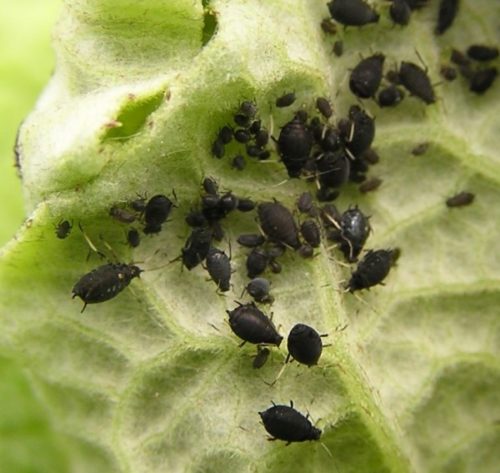
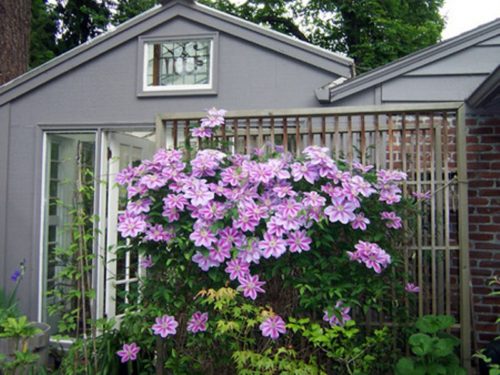












 Start a discussion ...
Start a discussion ...